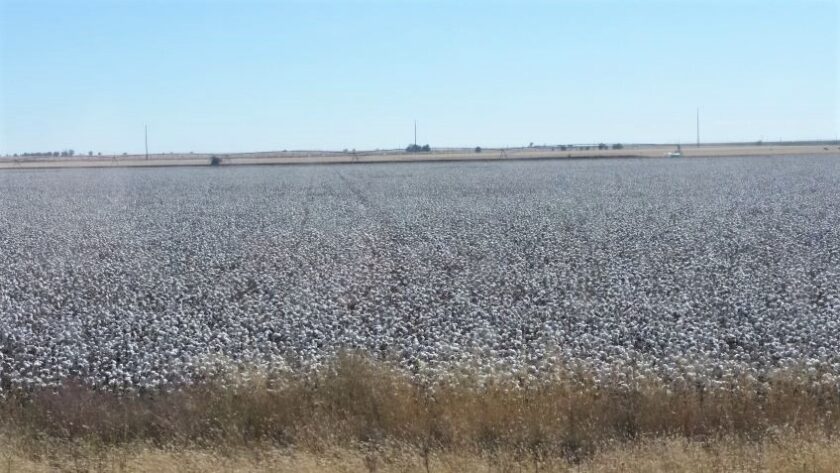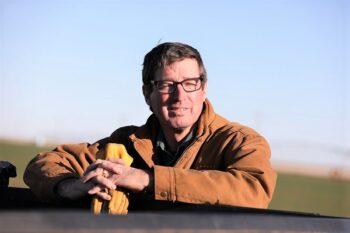
Barry Evans is a third-generation cotton grower, recognized by Field to Market: The Alliance for Sustainable Agriculture for his outstanding conservation efforts and leadership in advancing sustainable agriculture. Farming in the Texas Panhandle, the heart of America’s historic Dust Bowl, Barry has experienced the dangers of blowing topsoil first hand. We spoke to him about how he manages soil and water conservation in the resource-limited High Plains.
 Barry moved back to the family farm in 1992 having worked in industry for eight years after graduating from college. Today he grows cotton, grain sorghum and wheat and has about 1,400 hectares (3,460 acres) of land which one days he hopes to pass on to his son.
Barry moved back to the family farm in 1992 having worked in industry for eight years after graduating from college. Today he grows cotton, grain sorghum and wheat and has about 1,400 hectares (3,460 acres) of land which one days he hopes to pass on to his son.
Dust Bowl Moment
Asked what prompted his commitment to conservation, Barry describes the ‘Dust Bowl’ moment that transformed his approach to farming.
“My wife grew up in the city. She’s not a farm girl. And it was actually on a Sunday after church when we were changing clothes and getting ready for lunch. She said to me, the dirt’s blowing outside. But I knew better and I kind of pooh-poohed what she said. But eventually I looked out and she was right. And in 30 minutes the crop was gone. I decided at that point that there had to be a better way to do things. We had to make some changes.”
The changes Barry made were geared towards preventing wind-blown erosion of the topsoil but they have also boosted water conservation efforts on the farm – an important focus given the area’s declining Ogallala aquifer.
“When I moved back in 1992, the farm was about 80 percent irrigated – today it’s 14 percent irrigated. So, a large part of my conservation efforts is driven by that decline in the aquifer. How do we make a living? How do we remain profitable and sustainable without the irrigation water?”
No Till Cultivation
For Barry, moving to no-till farming has been a game changer.
“Whenever you till or plow the ground, you’re breaking up the soil structure, you’re burning off any organic matter a little bit quicker and also losing some carbon out of the soil,” he explains. “But by not tilling, you’re leaving that organic matter, which does two things.”
“First, it’s just like mulching a garden. Whenever the rain falls, it hits the organic matter, which helps to break up the rain drops. When rain just hits bare ground, it really sears that ground.”
Barry also says that the organic matter – or trash – that remains when you don’t till helps the water infiltration rate considerably over conventionally tilled ground while helping to hold nutrients and moisture in the soil.
“So, with no-till you both conserve the water that’s in the ground and help capture more rainfall and infiltrate. And that helps with the wind erosion and the water erosion also. So, it’s really a win-win.”


